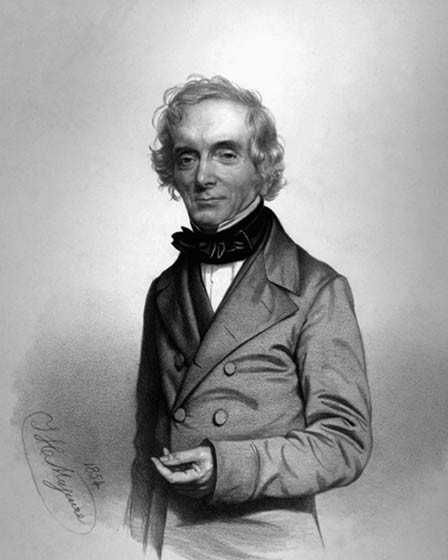Anthony, Lawrence; and Spence, Graham. 2012. The Last Rhinos: My Battle to Save One of the World’s Greatest Creatures. London, England: Sidgwick & Jackson; and New York, NY: Thomas Dunne Books.
Bass, Rick. 2012. The Black Rhinos of Namibia: Searching for Survivors in the African Desert. Boston, MA: Houghton Mifflin Harcourt.
Brumfield, Ben. 20 October 2014. “Countdown to Extinction: Only 6 Northern White Rhinos Left on Earth.” CNN.com: U.S. Edition > World > Africa. Atlanta, GA: Cable News Network, Turner Broadcasting System, Inc. Retrieved November 5, 2014.
- Available at: http://www.cnn.com/2014/10/20/world/africa/kenya-northern-white-rhino/index.html
Carson, Mary Kay. 2007. EMI and the Rhino Scientist. Boston, MA: Houghton Mifflin.
"Ceratotherium cottoni: Northern White Rhinoceros." Encyclopedia of Life. Retrieved November 5, 2014.
- Available at: http://eol.org/pages/4452602/overview/
"Ceratotherium simum: White Rhinoceros." Encyclopedia of Life. Retrieved November 5, 2014.
- Available at: http://eol.org/pages/311503/overview
Dell’Amore, Christine. 20 October 2014. “Extremely Rare White Rhino Dies in Kenya -- His Kind Nearly Extinct.” National Geographic.com: News > Animals. Washington, D.C.: National Geographic Society. Retrieved November 5, 2014.
- Available at: http://news.nationalgeographic.com/news/2014/10/141020-rhinoceros-death-suni-kenya-science-world-endangered-animals/
Groves, Colin P. Groves; Prithiviraj Fernando; and Jan Robovský. 2010. "The Sixth Rhino: A Taxonomic Re-Assessment of the Critically Endangered Northern White Rhinoceros." PLoS ONE 5 (4): e9703. DOI: 10.1371/journal.pone.0009703. Retrieved November 5, 2014.
- Available via PLOS ONE at: http://www.plosone.org/article/info%3Adoi%2F10.1371%2Fjournal.pone.0009703
Heller, Edmund. 1913. The White Rhinoceros. With thirty-one plates. Smithsonian Miscellaneous Collections, Volume 61, Number 1, Publication 2180. Washington DC: Smithsonian Institution.
- Available via Internet Archive at: https://archive.org/details/whiterhinoceros00hellgoog
Holmes, Mary Tavener. 2007. My Travels with Clara. Los Angeles, CA: J. Paul Getty Museum.
Joubert, Beverly; and Joubert, Dereck. 2009. Rhino Rescue. Produced by Wildlife Films Botswana for National Geographic Channel. Washington, D.C.: National Geographic Society.
Lydekker, R. (Richard). 1908. The Game Animals of Africa. London: Rowland Ward Limited.
- Available via Internet Archive at: https://archive.org/details/gameanimalsofafr00lyde
Orme, Helen. 2007. Rhinos in Danger. New York, NY: Bearport Publishing.
Owen-Smith, Norman. 1975. "The Social Ethology of the White Rhinoceros." Zeitschrift für Tierpsychologie 38:337-384.
Owen-Smith, Norman. 2003. "White Rhinoceros: Ceratotherium simum." Pp. 261-262 in Grzimek's Animal Life Encyclopedia, 2nd Edition. Volume 15, Mammals IV, edited by Michael Hutchins, Devra G. Kleiman, Valerius Geist, and Melissa C. McDade. Farmington Hills, M: Gale Group.
Spilsbury, Richard. 2004. Black Rhino: In Danger of Extinction! Chicago, IL: Heinemann Library.
Tibbitts, Alison. 1992. African Rhinos. Mankato, MN: Capstone Press.
Tjader, Richard. 1910. The Big Game of Africa. New York and London: D. Appleton and Company.
- Available via Biodiversity Heritage Library at: http://biodiversitylibrary.org/page/9416037
Trouessart, Édouard Louis. 1909. "Le Rhinocéros blanc du Soudan (Rhinoceros simus cottoni)." Proceedings of the Zoological Society of London (February 16, 1909): 198-200
- Available via Internet Archive at: https://archive.org/stream/proceedingsofzoo19091544zool#page/198/mode/1up
Van Gyseghem, R. 1984. "Observations on the Ecology and Behaviour of the Northern White Rhinoceros." Zeitschrift für Tierpsychologie 49:348-358.
Watt, E. Melanie. 1998. Black Rhinos. Austin, TX: Raintree Steck-Vaughn.
“White Rhinoceros (Ceratotherium simum).” National Geographic.com: News > Animals. Washington, D.C.: National Geographic Society. Retrieved November 5, 2014.
- Available at: http://animals.nationalgeographic.com/animals/mammals/white-rhinoceros/
“White Rhinoceros.” WWF.Panda.org: What We Do > Priority Species > Rhinos > African Rhinos. Gland, Switzerland: World Wildlife Fund. Retrieved November 5, 2014.
- Available at: http://wwf.panda.org/what_we_do/endangered_species/rhinoceros/african_rhinos/white_rhinoceros/

















 Are Hawaiian Huakai Po Nightmarchers Avenging Halloween Thursday?on 10/02/2024
Are Hawaiian Huakai Po Nightmarchers Avenging Halloween Thursday?on 10/02/2024
 Mailing Addresses for 2023 Form 4868 Extending 1040 and 1040SR April 15, 2024, Due Dateon 04/15/2024
Mailing Addresses for 2023 Form 4868 Extending 1040 and 1040SR April 15, 2024, Due Dateon 04/15/2024
 Mailing Addresses for 2023 Forms 1040 and 1040SR Filed in 2024on 04/15/2024
Mailing Addresses for 2023 Forms 1040 and 1040SR Filed in 2024on 04/15/2024
 Mailing Addresses for 2022 Form 4868 Extending 1040 and 1040SR April 18, 2023, Due Dateon 04/13/2023
Mailing Addresses for 2022 Form 4868 Extending 1040 and 1040SR April 18, 2023, Due Dateon 04/13/2023



Comments